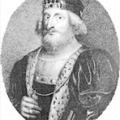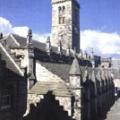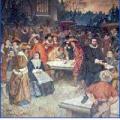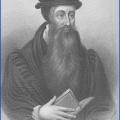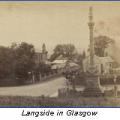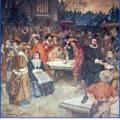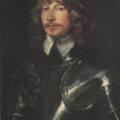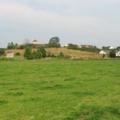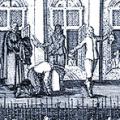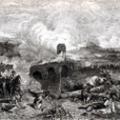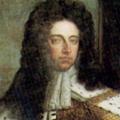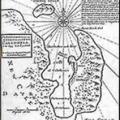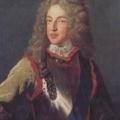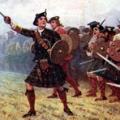Categories
Most Liked
Posted on July 17, 2013
by Amanda Moffet
by Amanda Moffet
Posted on May 12, 2013
by Chas Mac Donald
by Chas Mac Donald
Posted on August 29, 2013
by Amanda Moffet
by Amanda Moffet
Posted on February 6, 2013 by Donald | 0 views | comments
In 1332 during an Anglo-Scots peace, Edward Balliol sailed with eighty-eight ships from the Humber to Fife and fought his way to Scone. His father John had abdicated in 1296 and Edward, claiming his family as still the true royal line, had himself crowned King of Scotland.
David II’s claim had the ...
Posted on February 6, 2013 by Donald | 0 views | comments
St Andrews University is first mentioned in documents of 1410, but its birth is usually assigned to the charter given to Bishop Henry Wardlaw in 1412, endorsed the following year by Pope Benedict XIII.
This was Scotland’s first university and had Warlaw as its Chancellor, while Laurence of Lindores ...
Posted on February 6, 2013 by Donald | 0 views | comments
A covenant is a contract between God and the people.
In 1557 a group of Protestant nobles opposed to Mary marrying the Roman Catholic Dauphin of France, signed a covenant to state that they would promote the ‘blessed work of God and his Congregation against the Congregation of Satan’, the former...
Posted on February 6, 2013 by Donald | 0 views | comments
The most influential person of the Scottish Reformation, John Knox, was first ordained as a Catholic priest.
Knox spent time in the company of George Wishart before he was arrested and burned for heresy in March 1546 by Cardinal Beaton. Knox joined the Reformers, who murdered Cardinal Beaton the...
Posted on February 6, 2013 by Donald | 0 views | comments
Queen Mary’s reign was in tatters when she escaped from Loch Leven Castle on 2 May 1568. A week later she had gathered six thousand men willing to fight for her as she headed for the safety of her strong Dumbarton Castle, which Lord Fleming was holding for her.
Lord James Stewart, her half-brothe...
Posted on February 6, 2013 by Donald | 0 views | comments
Charles I’s views of himself, theology and politics became increasingly contradictory to the beliefs of the Presbyterians. Charles tried to bring together the laws and churches of Scotland and England, with all roads leading to himself.
In 1637 he produced the Book of Common Prayer, written witho...
Posted on February 6, 2013 by Donald | 0 views | comments
James Graham, 5th Earl and later 1st Marquis of Montrose, was born in 1612 and studied at St Andrew’s University.
In 1638 he contributed to the National Covenant, and fought for the Covenant in the Bishops’ Wars. As the country moved into ever more turbulent times, Montrose’s sympathies moved bac...
Posted on February 6, 2013 by Donald | 0 views | comments
Under James Graham, the Marquis of Montrose, the Royalist army had achieved success at Inverlochy and Dundee.
He made camp with his 1750 men and 250 horses at Auldearn, around three miles to the east of Nairn. The Covenanters were marching through the night from Inverness to fight him.
Sir John ...
Posted on February 6, 2013 by Donald | 0 views | comments
Civil War had begun in earnest by 1642. Charles I was the enemy of the Presbyterians in Scotland and the parliamentarians in England.
His lack of ability at negotiation and conciliation had compounded his situation. Montrose had done well for him in undermining the Calvinists and Campbells for a ...
Posted on February 6, 2013 by Donald | 0 views | comments
Following success against the military at the recent Battle of Drumclog, the Conventiclers’ support had swollen to six thousand when they came together at Hamilton in June 1679.
Differences between Covenanters which had undermined them through the 1650s, again created factions among their numbers...
Posted on February 6, 2013 by Donald | 0 views | comments
James had converted from Protestantism to Catholicism in 1668 whilst his brother Charles II was monarch. When the King too converted and tried to re-install Catholicism among his subjects around 1672, there was outrage. Acts were passed in Parliament, such as the Test Act, so only Anglicans could ...
Posted on February 6, 2013 by Donald | 0 views | comments
For twenty years the London East India Company had enjoyed soaring success, bringing incredible fortunes to its stockholders through its virtual monopoly of Eastern trade.
By 1695 competitors in the market were using every scandalous technique to have Bills in their favour passed in England’s Par...
Posted on February 6, 2013 by Donald | 0 views | comments
Thanks to the treatment of Scotland before and after the 1707 Union, there was always strong underground support for the reinstatement of the exiled Stewarts to the throne.
Events following the death of Queen Anne in 1714 brought emotions to a level where the man who would lead government forces,...
Posted on February 6, 2013 by Donald | 0 views | comments
Bonnie Prince Charlie’s landing on Scottish soil ignited a firestorm of incredible stories and willing recruits so that the myths encouraged the masses, who encouraged the myths in a cycle. While the stories were drawing volunteers they were worrying the established powers. Sir John Cope, commandi...
Posted on February 6, 2013 by Donald | 0 views | comments
The Jacobites had fought all the way from the Highlands to Derby in England.
Outside of the Highlands it was becoming clear that Prince Charles and his claim was of no interest to Lowlanders or the Northern English, where very few supporters were coming forward. The Stewart intention of using suc...
Featured Articles
Most Discussed
Posted on July 16, 2013
by Amanda Moffet
by Amanda Moffet
Posted on February 6, 2013
by Donald
by Donald
Posted on July 17, 2013
by Amanda Moffet
by Amanda Moffet


 View More
View More View Less
View Less